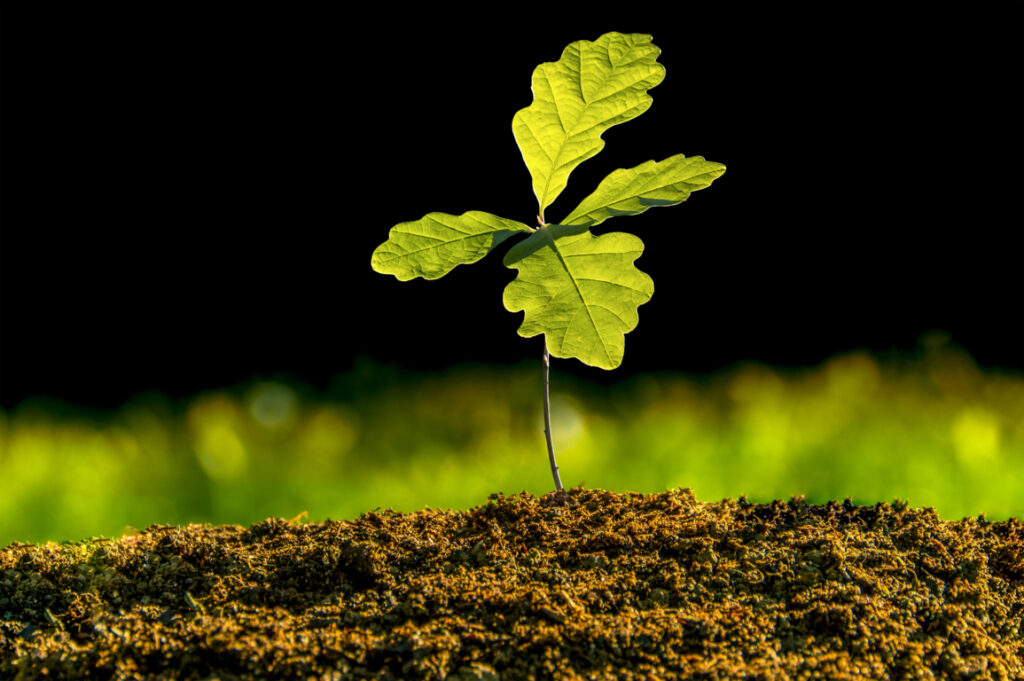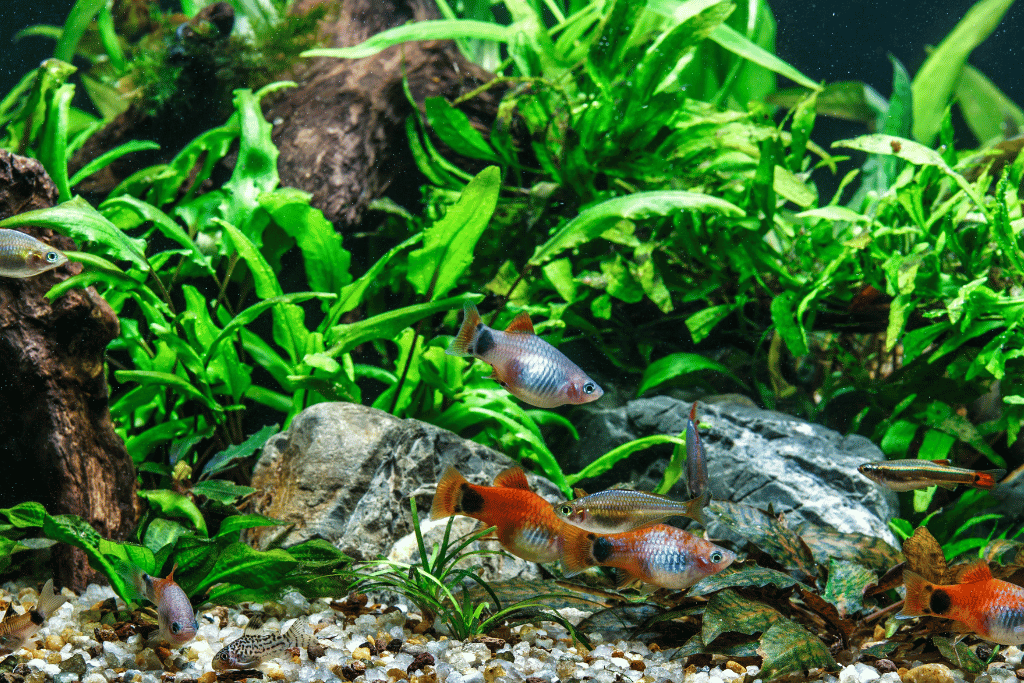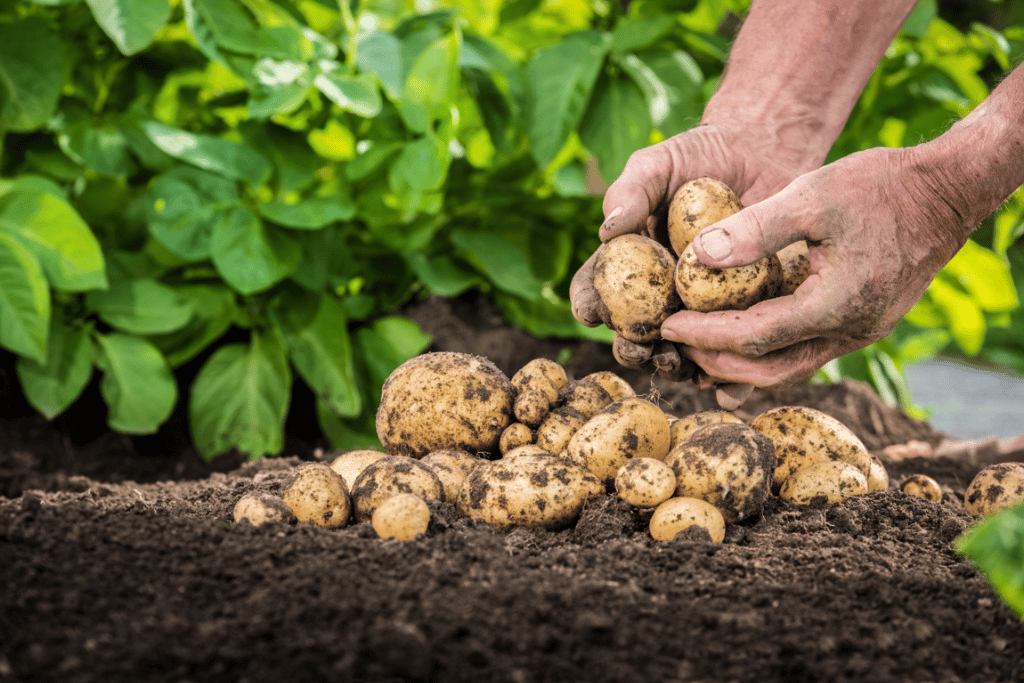
Whether it is french fries, mashed potatoes, or hash browns, potatoes have been and will remain an integral part of our lives. Thanks to their caloric-dense and nutritional properties, they are also credited for saving the Irish from famine. As easy as it is to recognize a potato, the same can not be said for its plant. It looks much like a tomato plant and has no special features to set it apart.
Determining when exactly a potato plant is ready to harvest might also be challenging. Therefore, I am writing this article to address the confusion once and for all. I will discuss “what does a potato plant look like” and how to determine if it is ready to be harvested using a few simple indicators.
Let us begin.
Potato Plant Overview
The potato plant is botanically known as Solanum tuberosum. Even though it is a perennial, it is often grown as an annual for its underground tuberous crops we refer to as “potatoes.” The plant thrives in well-drained, fertile, and slightly acidic soil.

Potato plant can reach a height of about 20 inches and has a short root system. Its roots only go about 2 feet deep in the soil. The plant also produces white, pink, purple, red, or blue flowers towards the end of the growing season.
Potatoes are classified as cool-season crops that can be grown in all USDA hardiness zones. Each plant can produce anywhere between 3-25 potatoes. What’s interesting is that potato is a versatile crop with over 4000 known varieties.
Reproduction
The most common method of potato plant reproduction is through vegetative propagation. It refers to using potato tubers with nodes to propagate the plant. A part of the tuber with at least one node is planted, and it gradually sprouts leaves and develops roots when provided with appropriate conditions, leading to a new potato plant. The tubers used for propagating a potato plant are called “seed potatoes.”
What Does a Potato Plant Look Like?
Recognizing a potato plant can sometimes be difficult, especially if you are not an experienced gardener. The plant doesn’t stand out in ways like unusual leaf shapes or other showy characteristics like some famous ornamental plants. Moreover, the resemblance of its leaves with a tomato plant makes things more confusing. The height of the plant is nothing to write home about, either.
In such a case, learning about the characteristics and features of a potato plant can help you identify it more easily.
Characteristics of a Potato Plant
1. Above Ground

Potato and tomato plants are often called “cousins” because they share many characteristics. One such characteristic is foliage. The leaves of a potato plant have a tear-drop shape and slightly serrated edges. The leaves can be creased, fuzzy, and grow alternately on the stem. The leaves are usually light to dark green.
2. Below Ground
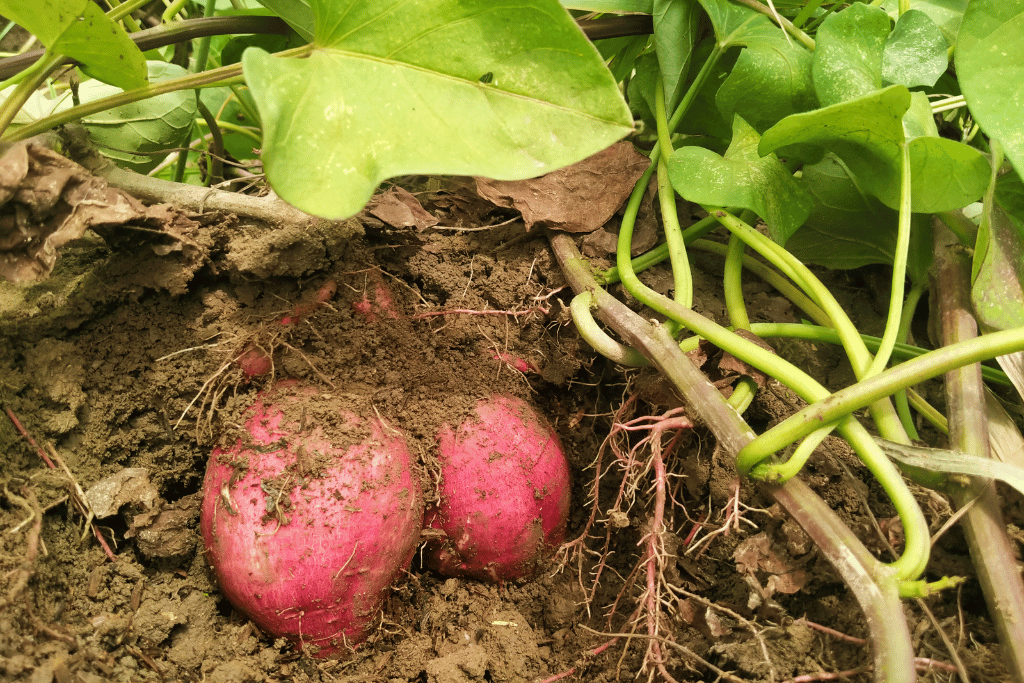
The majority of the roots of a potato plant are clustered at the bottom. However, some also grow along its stem. The stem is either ivory or white, and the part of the stem called the stolon produces tubers. This is one of the reasons why potato farmers practice “hilling.”
Hilling refers to the practice of covering the above-ground stem of a potato plant with soil or organic material periodically. Hilling helps tubers grow wide and deep, and encourages the growth of new potatoes above mature potatoes. It also improves the flavor of the potatoes.
3. Color and Shape Variation
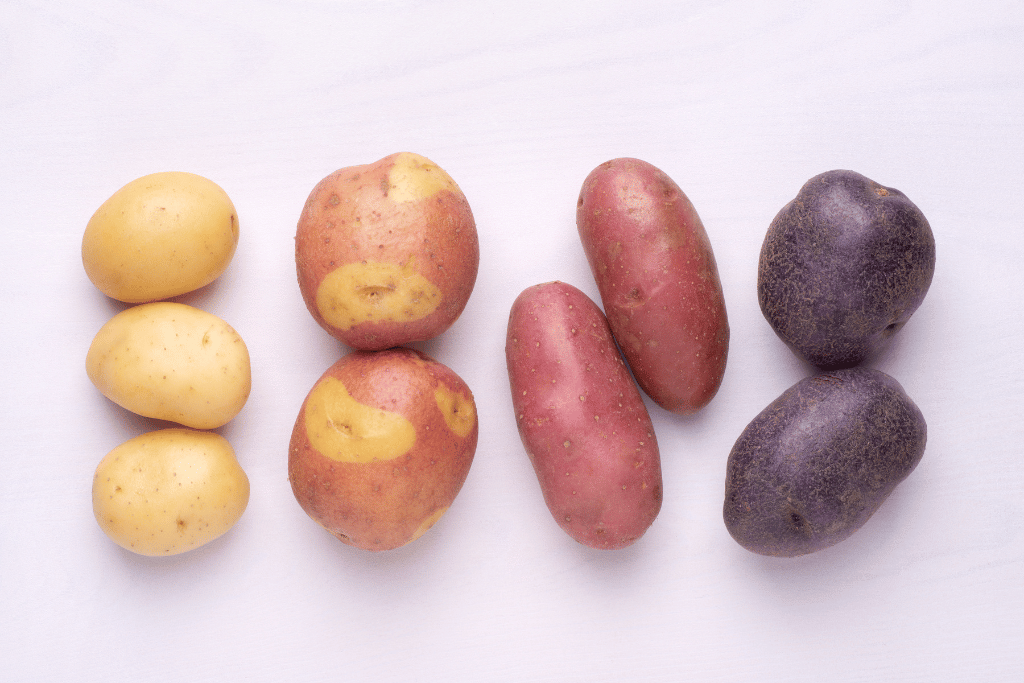
Even though the most common color is light to dark green, some varieties also show purple and pink hues in the new shoots. Depending on the variety, the tubers can also be red, tan, purple, yellow, blue, or gold. However, regardless of skin color, the flesh is most often white. Rarely, some varieties might have yellow, purple, blue, or red flesh too. The shape of tubers can vary too, such as oblong, round, or oval.
4. Flowers

The flowers of a potato plant may have individual or connected petals. Flowers can be pink, purple, or blue and may also be streaked with white or pink. The flowers also produce seed balls that may look like cherry tomatoes. Flowers add vibrance and color to an otherwise non-showy potato plant.
What Does a Potato Plant Look Like When Ready to Harvest?
Knowing what a potato plant looks like doesn’t necessarily mean you can see the signs that it is ready to harvest. The biggest giveaway of a potato plant ready to harvest is its leaves. Here are the signs to look out for to know if it is time to dig up your potato plant or not.
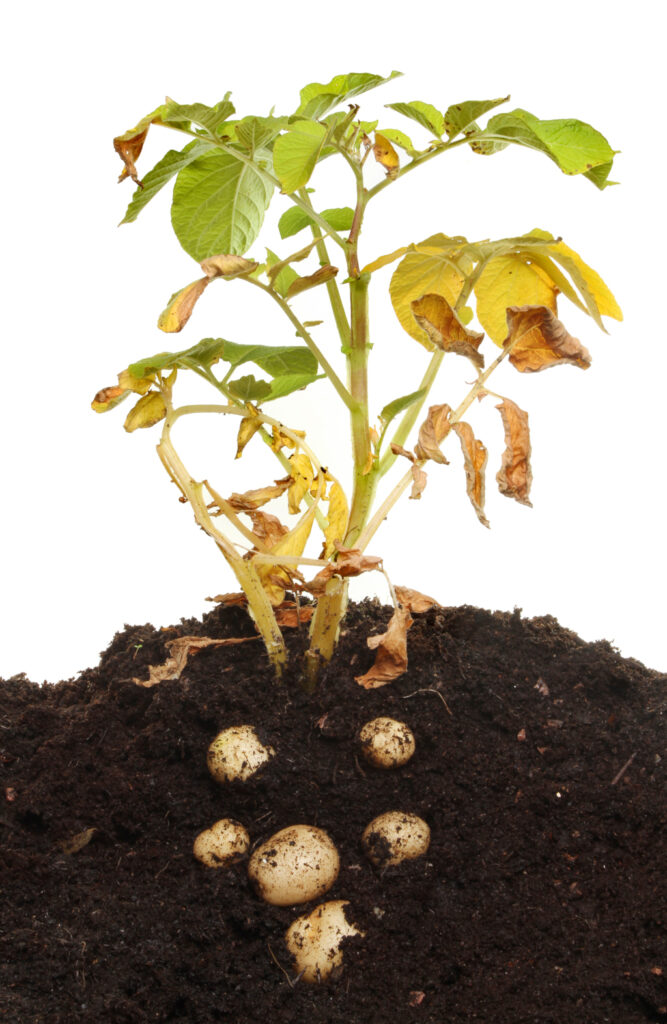
The first stage is the appearance of flowers. This is the beginning of the process where the tubers start to grow and mature. Over time, the leaves on your potato plant will turn from green to yellow. Eventually, every plant will have yellowing leaves. However, the potatoes are still not mature by this time.
In the next step, the flowers on your plant will die off, and the plant will shrink back toward the soil. This indicates that your plant is closer to its death than before. You should wait a little longer for the leaves to completely die off until only the stems remain. At this time, the plant is almost dead and is ready to be harvested for its tubers. To make things easier, let me discuss the timeline for your potatoes to ripen and be ready for harvesting.
How Long till a Potato Plant is Ready to be Harvested?
The life cycle of a potato plant is as follows. Farmers begin by planting seed potatoes around late March/early April. The tops of the potato plant start to die back about 60-120 days after planting. The exact timeline varies depending on the climate and the potato variety being grown.
The best time to harvest white potatoes is when their skin thickens. Another sign to notice is when the eyes near the potato’s surface begin to turn green. In terms of days, this happens about 70-80 days after planting. If you’re growing red potatoes, you can typically harvest them around 60-70 days after planting.
Harvesting New Potatoes: Exception to the Rule
Even though the rule of thumb is to wait for the leaves to change color and die back, there is an exception. Many people harvest early potatoes when the leaves are still green. These potatoes are smaller than mature potatoes and have thinner skin.

These early-harvested potatoes are called new potatoes. They have a shorter shelf life and typically go soft and stale after five days of harvesting. Therefore, if you want new potatoes, ensure you don’t harvest more than you need.
To harvest them without affecting the plant, dig the soil’s top few inches. Feel around for small potatoes and pull them out gently.
Other Reasons for Potato Plant Changing Color
You might think your plant is heading toward maturity, only to find out later that it has yet to produce the expected yield. There are a few other reasons for your potato plant changing color that you should know about.
Improper Caring
Yellowing leaves may indicate a problem with watering or nutrients. Take time to learn as much as possible about the plant’s growing requirements to prevent this from happening.
Pests and Diseases
If your plant has a disease like blight, it will turn black rapidly, i.e., only in a couple of days. Pests like aphids can also affect your plant’s health. One sign of an aphid infesting is the tight curling of leaves. This phenomenon will stunt the plant’s growth, but the color of the leaves will remain green.

To rule out diseases and pests as a reason for your plant changing color, notice exactly when the change occurs. It is natural for a potato plant to turn yellow and gradually die back once it flowers. However, if this change occurs before flowering, you can be sure something is wrong with your plant.
Final Words
Whether you want to learn how to identify a potato plant or to ascertain if it is ready to be harvested, this piece will make things easier for you. The easiest sign of a harvest-ready potato plant is the gradual change in the color of its leaves and dying back once it flowers. The longer you wait for it to die back, the more mature and bigger potatoes you’ll have.


